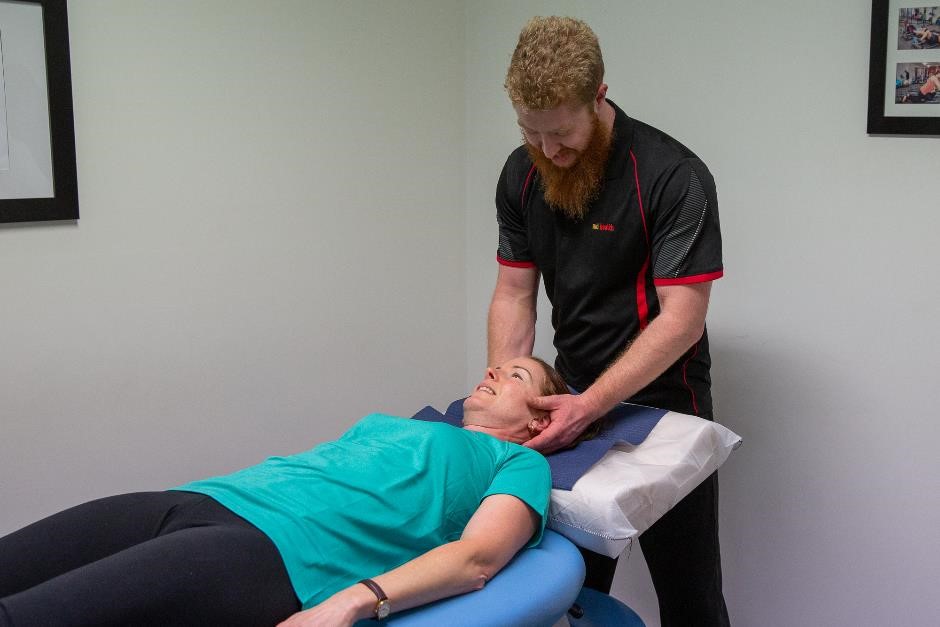Cervical Disc Bulge - Fact Sheet
What is a Cervical Disc Bulge ?
The spine is made up of linked segments of bone called vertebrae. In between each vertebra is a ‘spongy’ disc that acts as a cushion for your spine, as well as allowing movement here so that you can move around. There are also ligaments that hold the spine together and offer stability. Muscles around the spine produce movement.
What is cervical discogenic pain?
This means that the pain is coming from an intervertebral disc in your neck. The disc may become injured as a result of a single or repetitive trauma. Your disc contains a sac of fluid-like substance that can be pushed backwards within the disc. If this happens for a prolonged period of time, for example with sitting in a slouched position, pain can occur.

Signs and Symptoms of Cervical Disc Bulge ?
• A disc bulge is usually associated with significant amounts of pain, however this can be extremely variable. Pain can be felt in the neck, into the shoulder blade and/or down the arim into the fingers
• When there is also compression and irritation of the nerve roots from impingement of the disc (as they pass behind the disc), symptoms can imclude – pins and needles and numbness down the arm towards the fingers, weakness of the muscles of the shoulder, arm and hands, and loss of OR hypersensitised reflexes.
• The movement restriction from a disc bulge can be extremely variable, but generally is worse when the head is bend forward for a prolonged period of time.
Factors that can contribute to discogenic pain
• Poor posture
• Lack of exercise
• Stress
• Poor lifting technique
• Degeneration

Treatment of Cervical Disc Bulge?
Be aware of your posture: Poor posture can produce pain. Avoid sitting with a bent neck. Try and sit upright.
Exercise: When people experience pain, they become less active, which often makes their neck pain worse. Exercise decreases stiffness and weakness and improves spinal health. Tailored Clinical Exercise will help to strengthen the muscles that support and stabilise your upper spine, thus decreasing the severity and occurrence of neck pain.
Hands on Treatment: Treatment like traction, and cervical spine stretching in certain positions can help improve the positioning of the disc bulge, and centralise your symptoms. This should not be solely relied upon, as evidence suggests this works mainly In the short term of 2-3days relief.
A positive attitude! These issues can take some time to resolve, particularly if you have been battling it for a few months. Don’t get disheartened! You WILL get better!




